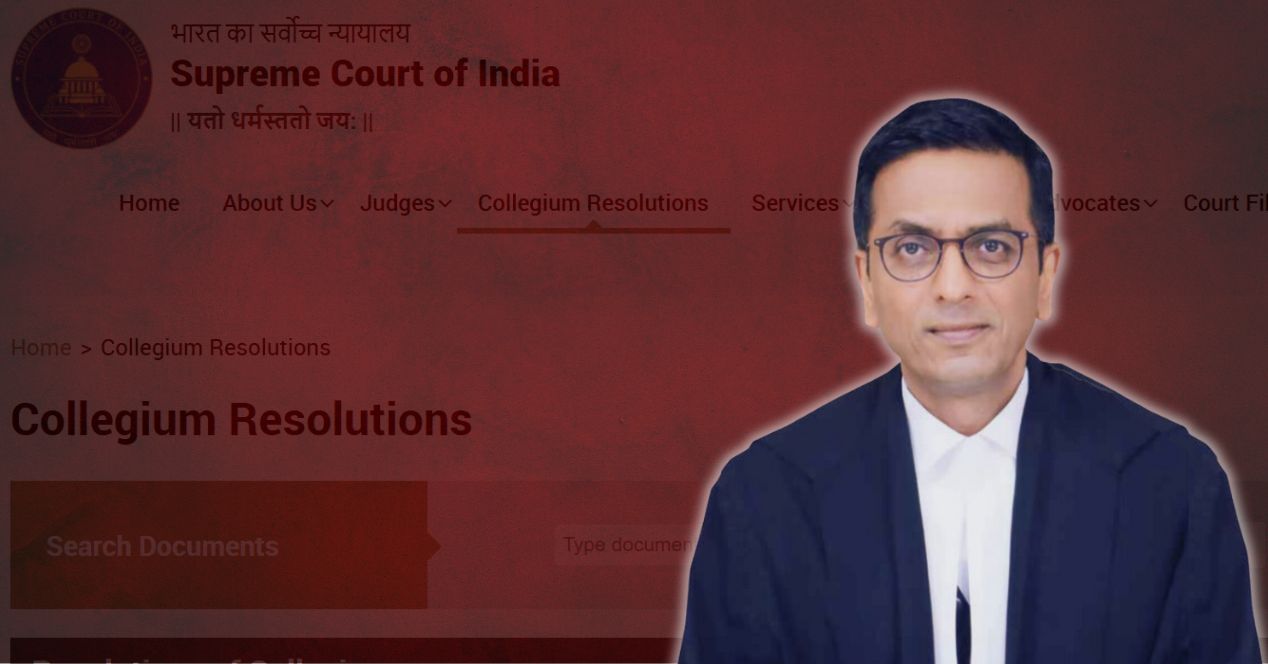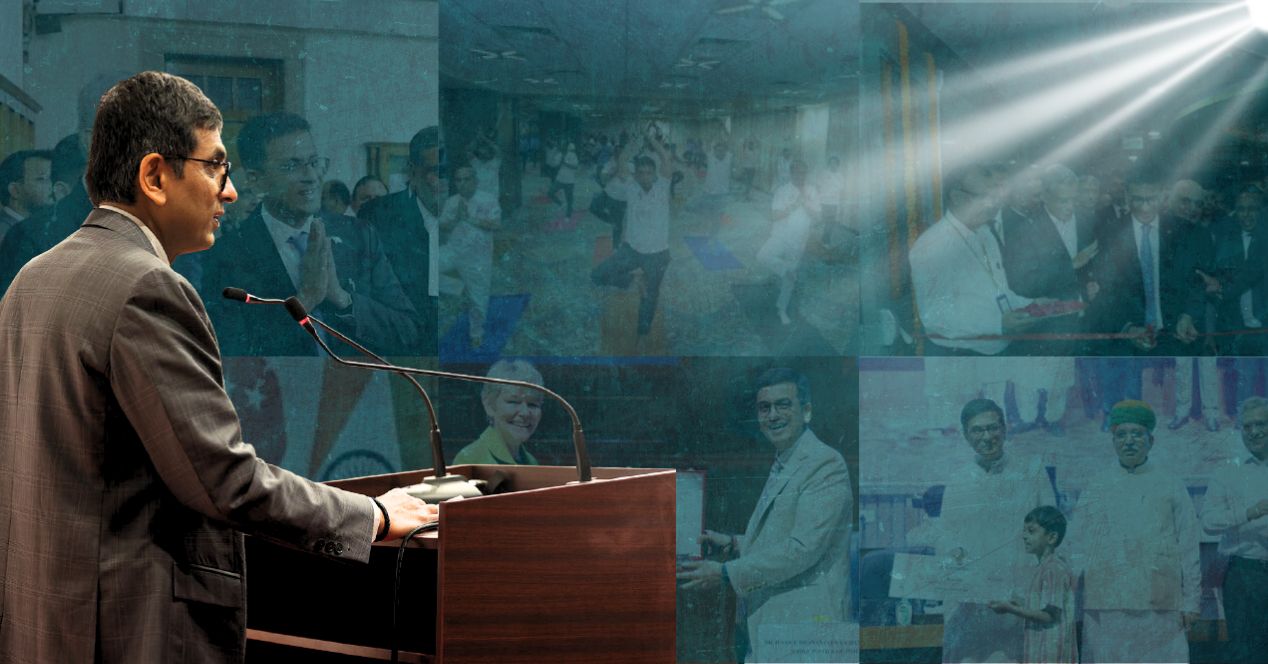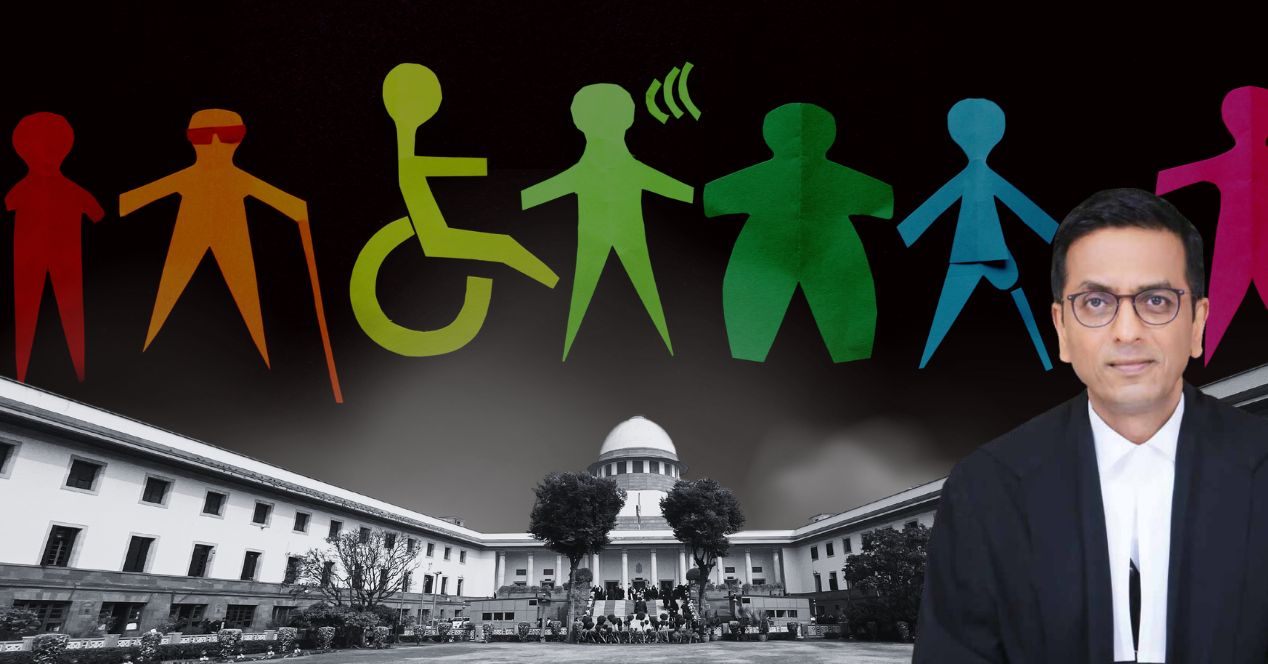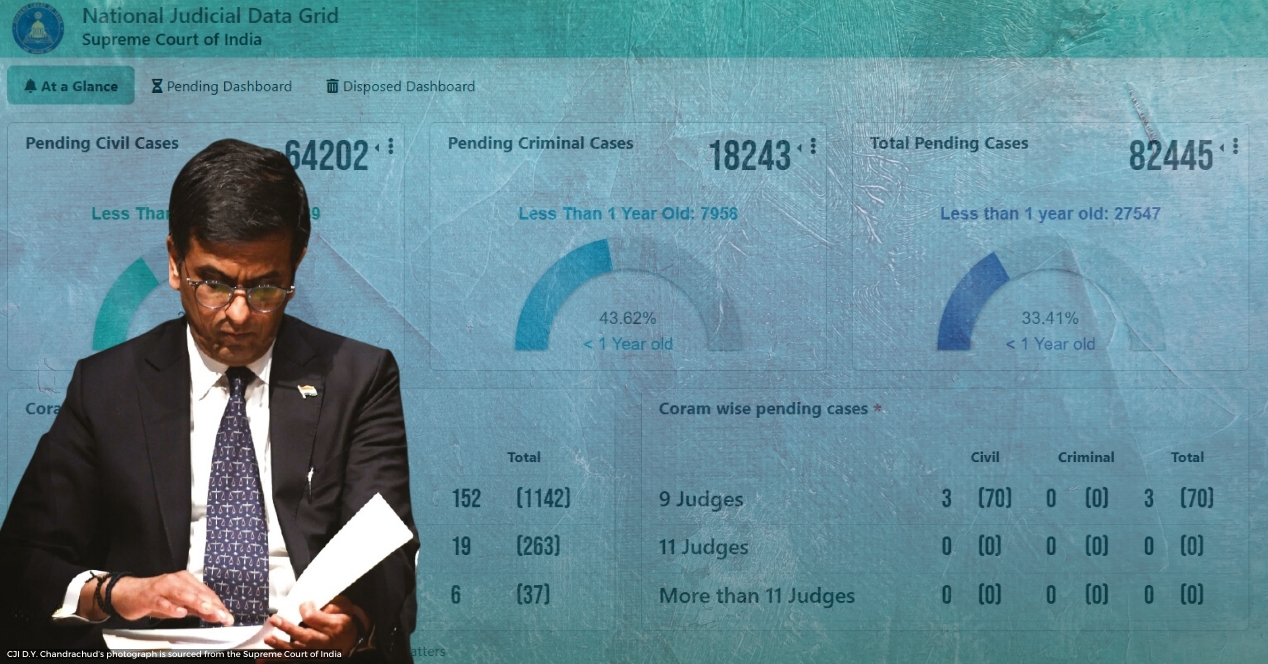Analysis
Best of times, worst of times: Making sense of Justice Chandrachud’s disability jurisprudence
The former Chief Justice approached issues with compassion but his decisions are premised on disability operating in silos and margins
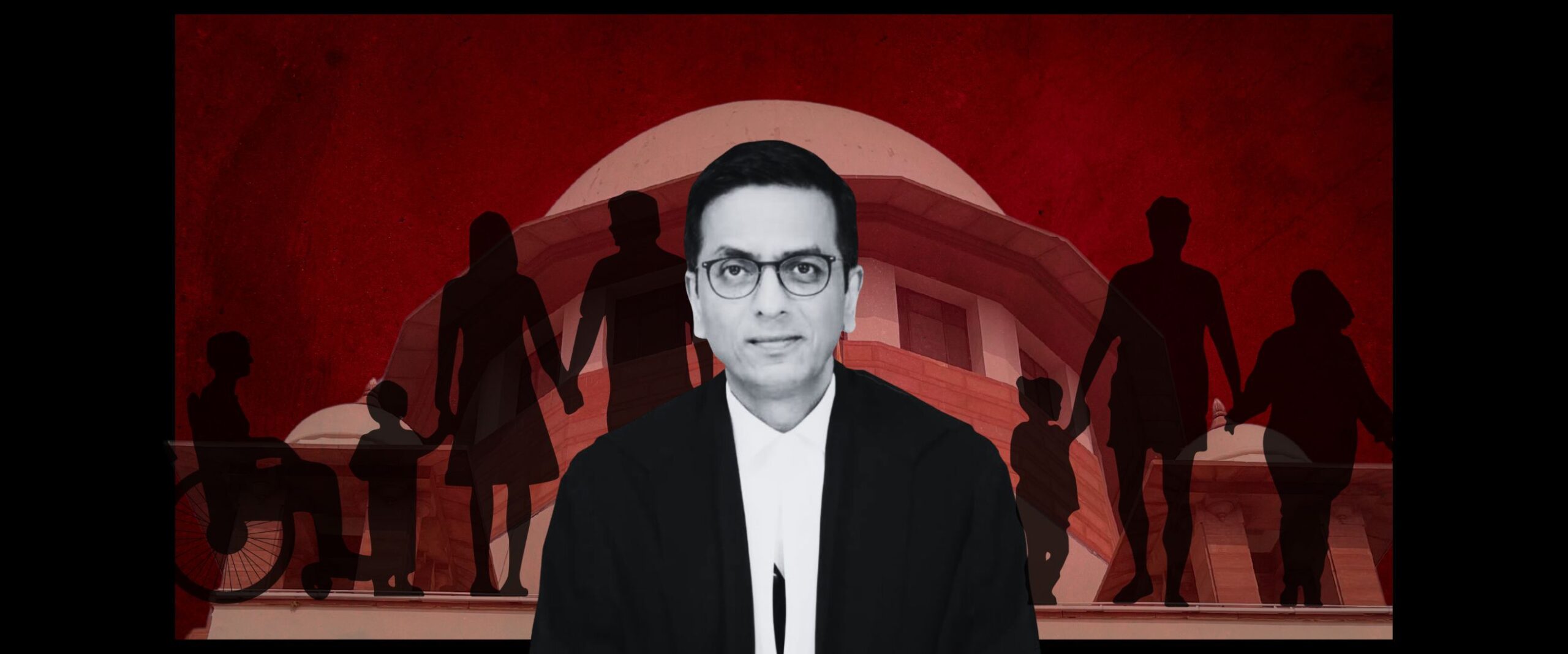
“It was the best of times, it was the worst of times, it was the age of wisdom, it was the age of foolishness, it was the epoch of belief, it was the epoch of incredulity, it was the season of Light, it was the season of Darkness, it was the spring of hope, it was the winter of despair, we had everything before us, we had nothing before us…”
— Charles Dickens, ‘A Tale of Two Cities’
In the last few weeks, we’ve already seen a deluge of commentary on the legacy of former Chief Justice of India, Dr. D.Y. Chandrachud. In all of them, his disability jurisprudence is treated as peripheral or hailed as progressive. Gautam Bhatia, in his otherwise critical appraisal, concedes that “there was certainly progress on disability rights.” In a farewell organised by the Supreme Court Bar Association, Senior Advocate Kapil Sibal called him a “trailblazer” in ensuring accessibility and disability justice. In their radically different opinions on DYC’s legacy, Pratap Bhanu Mehta and Upendra Baxi didn’t even mention the disability jurisprudence.
In these silences and plaudits for Justice Chandrachud’s contribution to disability jurisprudence in the “elite constitutional historiography”, if I may tweak the phrase of historian Ranjit Guha, there is overwhelming liberal consensus that the legacy of Justice Chandrachud on disability issues was “progressive”.
Mia Mingus, Sandy Ho, and Alice Wong, three great disability activists of our time, present a profound vision of disability justice in a simple phrase: ‘access is love’. One must hand it to Justice Chandrachud for approaching the question of accessibility and barrier removal for the disabled with empathy and compassion. It’s why the appraisal of his legacy from India’s disability movement has been highly positive.
However, the commentary so far has approached his disability jurisprudence in a way that either conveys the feeling that disability justice works in silos or that it remains marginal in the wider constitutional scheme. Such readings miss the point that the question of disability justice is directly linked with civil liberties, the health of democracy and the rule of law. Justice Chandrachud’s judicial interventions in the arena of disability must be located within this framework of the rule of law and liberties to avoid the Whiggish reading of his contribution to disability justice.
A ‘Crip’ reading of the Constitution, which embodies the lived experience of disability, debunks the liberal mythology of the Constitution being an inclusive document. Rohit De and Ornit Shani point out that the lack of representation and testimonial erasure of the disabled in the Constituent Assembly was deeply felt by The Deaf and Dumb Society of India. The constitutional silence was only broken by an ambivalent reference within the non-enforceable Directive Principles of State Policy.
Such marginal situatedness made disability citizenship precarious and the social contract between disabled citizens and the Indian republic incoherent and incomplete. It was a classical conundrum of liberal bourgeois constitutionalism, which was unsure, if not insensitive, towards disabled ‘peripheral’ and ‘anomalous’ embodiments. Martha Nussbaum too captured this conundrum when she highlighted that the prevailing liberal theories of social justice exclude persons with disabilities.
This is this historical and philosophical context in which it will be useful to appraise Justice Chandrachud’s disability jurisprudence. In doing so, we must not fixate only on the judicial process and cases. We should also take stock of how he spoke about the issue outside court.
The insular and discrete minority model and Modular Disabled Citizenship
One of the famous cases decided by Justice Chandrachud on the question of disability is Vikas Kumar v UPSC (2021). The judgement proposed reasonable accommodation and non-discrimination as the fulcrum of contemporary disability jurisprudence. The judgement valourised the social model of disability and rejected the medical model.
Jurisprudentially speaking, Justice Chandrachud deployed the Right of Persons with Disabilities Act, 2016 to strengthen the social contract between disabled citizens and the republic. But the judgement situated disabled citizens in a modular normative form of citizenship. In paragraph 40, the judgement asserts that disabled people are “assets, not liabilities” and “they make us stronger, not weaker.” In paragraph 39, he opines that the disabled are a “discrete and insular minority.”
The model is derived from the Americans with Disabilities Act. Its origin lies in Footnote 4 of United States v Carolene Products (1938), considered the “most famous footnote” of constitutional law. Critical Disability Studies scholar Fiona Kumari Campbell has problematised the ‘insular and discrete minority model’ by highlighting its attempts to “spunk up” impairment and leave the ableist ethos intact. It continues to treat disability as an “exception” rather than usual and presents the community as a monolithic whole. She argues that the State treats the disabled as a vulnerable group whose members are given only a partial citizenship that is dependent on the State’s economic resources.
This neo-liberal tolerance of disability and its ‘inclusionism’ approaches the question of accessibility from the prism of “expectations of normative citizenship.” The social model of disability is itself a product of the post-Fordist economy, as David Mitchell and Sharon Snyder have pointed out. In this economic context, judicial activism provides a modular form of normative citizenship to the disabled. The sketch of this modular form of normative citizenship as assets and not liabilities is seen in the recent decision of the Supreme Court in Omkar Ramchandra Gond v Union of India (2024) There, in paragraph 51, Justice K.V. Viswanathan talks of certain disabled citizens as “some of the shining daughters and sons…in India who scaled extraordinary heights.”
This modular form of citizenship needs to be deconstructed within the discourse of able-nationalism and debility.
Debility strikes
Sins Invalid, a disability justice and performance project led by disabled, queer and Indigenous people has come up with ten principles of disability justice. These principles highlight the need for intersectionality in appreciating disability justice, highlighting that “ableism, coupled with white supremacy, supported by capitalism, underscored by heteropatriarchy, has rendered the vast majority of the world ‘invalid.’”
Justice Chandrachud, while delivering the 2022 edition of the Prof. Shamnad Basheer Memorial Lecture, highlighted the need for intersectionality in approaching the question of disability. This intersectional lens is particularly useful in times when civil liberties have taken a hit and several constitutional ideals are under tremendous strain. These are times when disabled political dissenters like the late Professor G.N. Saibaba and the late Father Stan Swamy endured the worst form of state repression. Their suffering is a testimony to the fact that the neo-liberal modular citizenship will not be available to, in the words of W.E.B. Du Bois, ‘problem’ disabled citizens. Saibaba and Stan Swamy came out as the ‘problem’ disabled citizens as their stories aren’t of a piece with the narrative of ‘Crip nationalism’, which offers accommodation within ableist paradigms of national inclusion.
Asked about Saibaba and Stan Swamy, Justice Chandrachud blamed their predicament on media portrayal and didn’t hesitate to laud overall bail jurisprudence during his tenure. This data attempted to obscure a grand anti-liberty stance taken by our judicial system in recent times.
Political dissenters and religious minorities are the debilitated population of India. In its avatar of hegemonic masculinity, the State exercises repression over the bodies of dissenters and religious minorities. Our disability justice discourse needs to account for this aspect in order to avoid being misappropriated by crip-nationalist narratives. Here’s what Jasbir Puar reminds us about crip-nationalist discourse: “Disability empowerment and pride are part of rights discourses even as an expression of maiming, debilitation, and disabling are central to economies and vocabulary of violence and exploitation.”
Constrained fraternity and disability discourse
Mapping Justice Chandrachud’s intervention cannot be completed without examining two recent judgements that have given hope to the disabled communities: Om Rathod (2024) and Rajive Raturi (2024). Both judgments have made us feel welcomed and valued.
By taking an intersectional view, Rajive Raturi, which relied on a report by NALSAR-CDS, could go a long way in ensuring accessibility to every disabled. In this judgement, Justice Chandrachud extended the question of accessibility to the arenas of love, desire, and intimacy, areas which are generally not seen as ‘disability issues’.
Om Rathod situates the question of reasonable accommodation within a “progressive grundnorm” that secures justice, liberty, equality, and fraternity. The judgement notes that “discrimination excludes the aggrieved from the collective imagination of the nation.” However, the quality of fraternity in our current political discourse is not hidden. The dominant discourse in India uses the language of exclusion. The Supreme Court’s record on protecting certain constitutional ideals such as ‘fraternity’ has not been up to the mark.
In my view, the record of the Chandrachud Court in protecting civil liberties has not been promising. This was a time when ‘bulldozer justice’ was allowed to run amok and hate speech proliferated. When a significant population faces communal othering, ‘fraternity’ cannot be ensured for the disabled in silos. ‘Rightsy’ judgements cannot ensure accessibility in a polity based on exclusion.
Semantics and hermeneutical marginalisation
One of the milestones of Justice Chandrachud’s tenure was the release of the Handbook Concerning Persons With Disabilities. There is no doubt that it was an act of love shaped by an ethic of care towards the disabled community. However, its omission of problematising ‘divyang’, the official term for disabled in recent times, was unfortunate. The removal of the blindfold of ‘Lady Justice’ and replacing it with sighted Lady Justice also came across as an exercise in ableism. Over here, I have argued that this decision hermeneutically marginalised disabled experiences. It feels like we have been blocked from meaning-making and meaning-sharing our experiences.
Conclusion
Let’s go back to Dickens. Justice Chandrachud’s tenure could be characterised as the best of times for reasonable accommodation, accessibility and inclusion for the disabled. More so, because it comes in a neo-liberal economy and within a nationalist narrative. His judicial philosophy, based on liberal tolerance toward disability, has extended hitherto unavailable accessibility to the “insular and discrete minority”.
However, as Zizek pointed out, liberal tolerance is fraught with contradictions. As a post-political substitute, it provides only depoliticised citizenship. Justice Chandrachud’s disability jurisprudence suffers from the inherent limitation of liberal legalism. It will be tested in an era when the rule of law is at its nadir, and the impartiality of state institutions is suspect. The longevity, resilience and limitations of this jurisprudence will not be tested in the ‘best of times’.
Vijay is an Assistant Professor (Law) at the West Bengal National University of Juridical Sciences. He is an academician with disability. He can be reached at vijaykt@nujs.edu.

